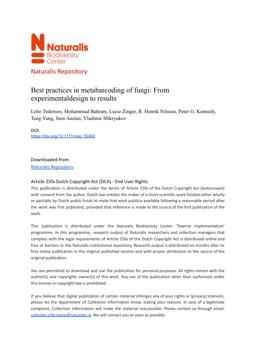2022-04-08
Best practices in metabarcoding of fungi: From experimental design to results
Publication
Publication
Molecular Ecology , Volume 31 - Issue 10 p. 2769- 2795
The development of high-throughput sequencing (HTS) technologies has greatly improved our capacity to identify fungi and unveil their ecological roles across a variety of ecosystems. Here we provide an overview of current best practices in metabarcoding analysis of fungal communities, from experimental design through molecular and computational analyses. By reanalysing published data sets, we demonstrate that operational taxonomic units (OTUs) outperform amplified sequence variants (ASVs) in recovering fungal diversity, a finding that is particularly evident for long markers. Additionally, analysis of the full-length ITS region allows more accurate taxonomic placement of fungi and other eukaryotes compared to the ITS2 subregion. Finally, we show that specific methods for compositional data analyses provide more reliable estimates of shifts in community structure. We conclude that metabarcoding analyses of fungi are especially promising for integrating fungi into the full microbiome and broader ecosystem functioning context, recovery of novel fungal lineages and ancient organisms as well as barcoding of old specimens including type material.
| Additional Metadata | |
|---|---|
| , , , , , | |
| doi.org/10.1111/mec.16460 | |
| Molecular Ecology | |
| Organisation | Staff publications |
|
Tedersoo, Leho, Bahram, Mohammad, Zinger, L., Nilsson, R. Henrik, Kennedy, Peter G., Yang, Teng, … Mikryukov, Vladimir. (2022). Best practices in metabarcoding of fungi: From experimental design to results. Molecular Ecology, 31(10), 2769–2795. doi:10.1111/mec.16460 |
|
